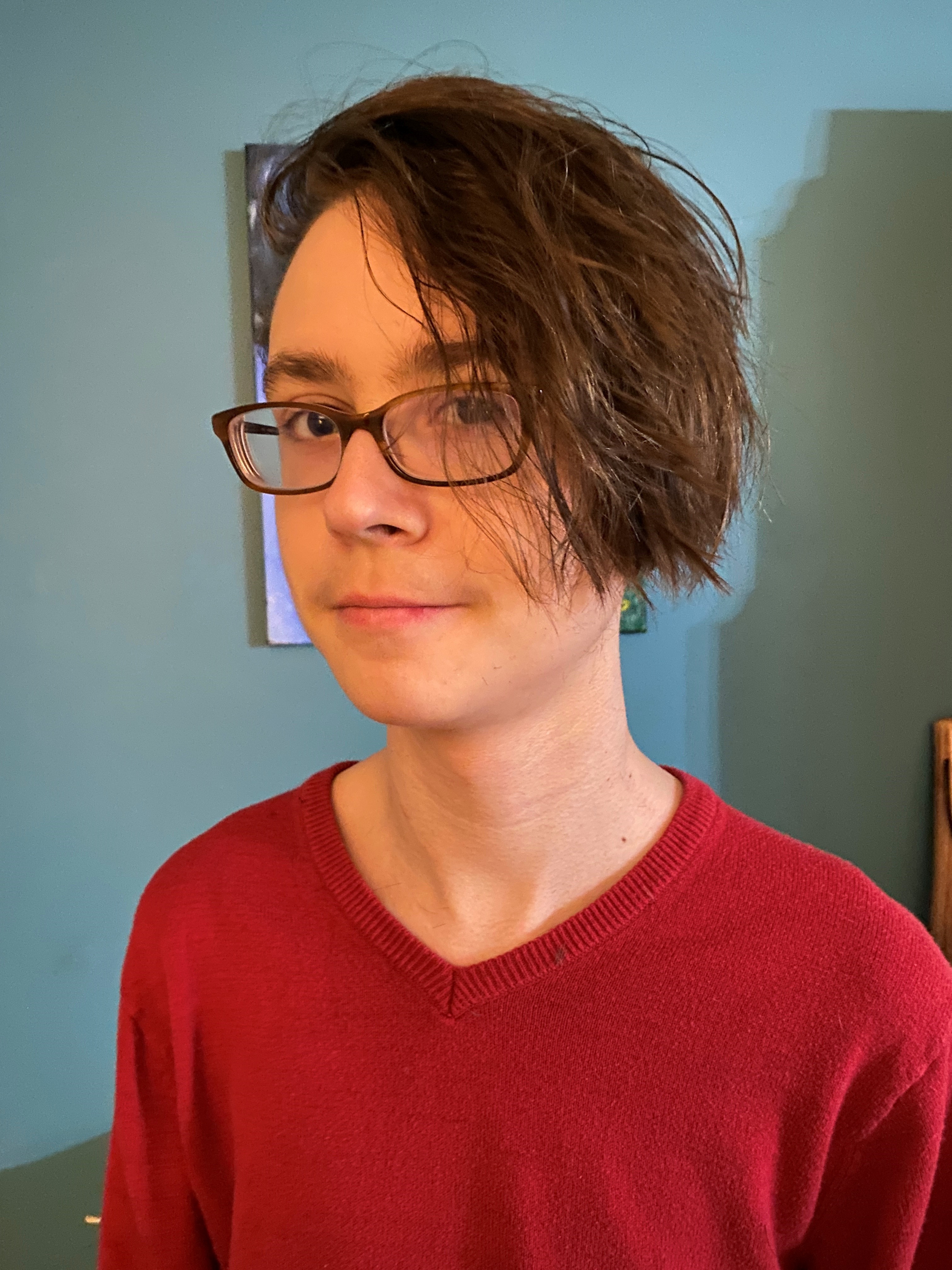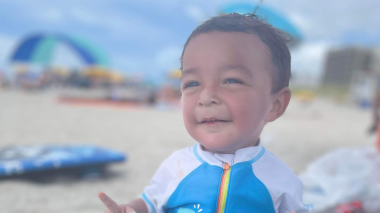Jaron Rosser was the 100th pediatric patient to get a heart transplant at Atrium Health Levine Children’s Hospital. Levine Children’s celebrated the big milestone after his transplant last December, and cheered him on as he returned home to Asheville, ready for his new life with his new heart.

Then, Jaron came back to us. He developed pain and fatigue, so his team at Atrium Health Levine Children’s came together – and pulled in more specialists – to determine what was wrong and how to help him. They diagnosed Jaron with post-transplant lymphoproliferative disease (PTLD). It’s a rare complication in transplant patients, causing cancer after a transplant, and it requires very careful treatment. After an organ transplant, patients take anti-rejection medicine to suppress the immune system, which allows the body to accept the new organ. But fighting cancer requires a strong immune response.
“It’s a very delicate balancing act,” says Gonzalo Wallis, MD, Jaron’s pediatric cardiologist at Atrium Health Levine Children’s. “If you’re too aggressive lowering the immunesuppression medications, you can make the body reject the new heart. If you’re not aggressive enough, then the cancer can keep progressing. You need a multidisciplinary approach for this, and only a place that’s highly coordinated can do this.”
Jaron’s body didn’t respond to the standard treatment for this condition. He needed an experimental therapy to recover.
About a month earlier, Michael Kent, MD, a pediatric hematologist and oncologist at Levine Children’s, shared a study with Dr. Wallis and the cardiology team showing the power of viral specific T-cell therapy in such cases. This new therapy can fight off a virus for a patient who has a suppressed immune system. Dr. Kent found that Jaron would be an ideal candidate for this innovative therapy. The hematology, oncology and cardiology groups already had close working relationships, and they collaborated for the next stage of Jaron’s treatment.
“Our teams have a lot of collegiality in terms of being able to quickly come up with a plan,” says Dr. Kent. “We’re continuing to grow our ability to offer cell therapies like these at Levine Children’s Hospital and Levine Cancer Institute and to continue offering more cutting-edge options in the near future.”
Levine Children’s Hospital is the only hospital in the area to offer this treatment. And with this, Jaron became at the center of two major milestones for the hospital: Not only was he the 100th pediatric heart transplant, but he also became its first patient for Viral Specific T-cell therapy. These milestones symbolized both the experience of Levine Children’s Hospital, as well as its commitment to cutting-edge treatments.
Team Jaron
Jaron spent 100 days in the hospital over the course of his PTLD diagnosis and treatment, and he received six doses of the T-cell specific therapy. He remained under the care of the transplant team, the surgical team, the cellular therapies team and a nutritionist. The delicate balance worked: Jaron recovered from PTLD while remaining strong enough for his body to accept his new heart.
“We felt that everyone was on Team Jaron,” says his mom, Lynn. “It was a complicated situation at first, and it was really helpful to know that there were multiple sets of brilliant minds working on it.”
His team included more than doctors and nurses, however. The teams also pulled in child life specialists and music therapists who kept Jaron’s mind active and created a sense of play through his long hospital stay.
“We have all these ancillary services here to try to bring normalcy to children in an abnormal situation,” says Dr. Wallis.
The Medicine of Music
Jaron isn’t the typical patient that music therapists encounter. Music is almost part of his DNA; his father is a professional music producer, and Jaron’s composed music nearly all his life. Before and after Jaron’s heart transplant, music therapists Gillian Zambor, MT-BC, and Danae Merrick, MT-BC, came to his room to record his heartbeat. Usually, the music therapists take such a recording and transform it into an original song for a patient, but Jaron had the expertise to compose and edit his own song.
“For kids especially, the hospital environment is overwhelming. They’re answering questions and listening to updates, so sometimes they benefit when communication comes in a way that’s not verbal,” says Gillian. “Music is a huge part of Jaron’s life, but I think for everyone, music offers a universal way to connect. Across the board, any diagnosis or any age group, we’re able to use music as a form of connection and non-verbal communication.”
Jaron decided that a 100-day stay in a hospital was an experience that very few people have – and he could turn a negative experience into unique inspiration for music. He transformed what he saw, heard and felt during those 100 days into electronic music compositions. But as Jaron created music, he also did something else: He relaxed. He eased his pain.
“With Jaron, music therapy took him to another world where he wasn’t in the hospital,” Danae says. “It really helped him through his pain and anxiety to transport him somewhere else. He’d start sessions clenched into a teeny tiny ball, but by the end, he’d release his legs to the end of the bed, relax his shoulders, and by the time we were done, he’d was all laid back with his hand behind his head, like he was getting a suntan at the beach.”
When Jaron worked on his music with Gillian and Danae, nurses who entered the room to check on him would dance along. Doctors asked to hear his latest compositions. Lynn jokes that dance parties would break out in Jaron’s room.
“Being able to share the music I was working on in the hospital with doctors and nurses really uplifted me,” Jaron says. “That is something I will definitely remember.”
A Comprehensive Team to Tackle the Unexpected
Complications following a pediatric heart transplant are rare, Dr. Wallis says, but it’s vital to have a comprehensive program with a strong multidisciplinary team ready in case one like Jaron’s does occur. With cardiology, transplant, oncology and hematology treating Jaron’s PTLD while keeping his new heart healthy, Jaron got through a long stay and an innovative treatment to recover and return home once again.
“Levine Children’s Hospital has put the effort and forethought to get medical expertise in not one, but all areas, and to empower all of those areas to work closely together,” Dr. Wallis says.
The team not only cares for patients’ physical health, but it offers the resources to care for their emotional well-being, too. Jaron says that taking advantage of ancillary services like child life services and music therapy can transform a difficult time into an endurable one.
“The longer you’re in the hospital, the easier it is to detach from who you are and what your purpose is in the world – and to detach from society in general. It can really mess with you, emotionally and physically,” Jaron says. “What you need to do is to make sure that you hold onto what makes you you. I can’t imagine what this would’ve been like without having music projects.”
Learn more about pediatric care at Levine Children’s to make an in-person, phone or virtual appointment. Learn more about music therapy at Levine Children’s Hospital.



